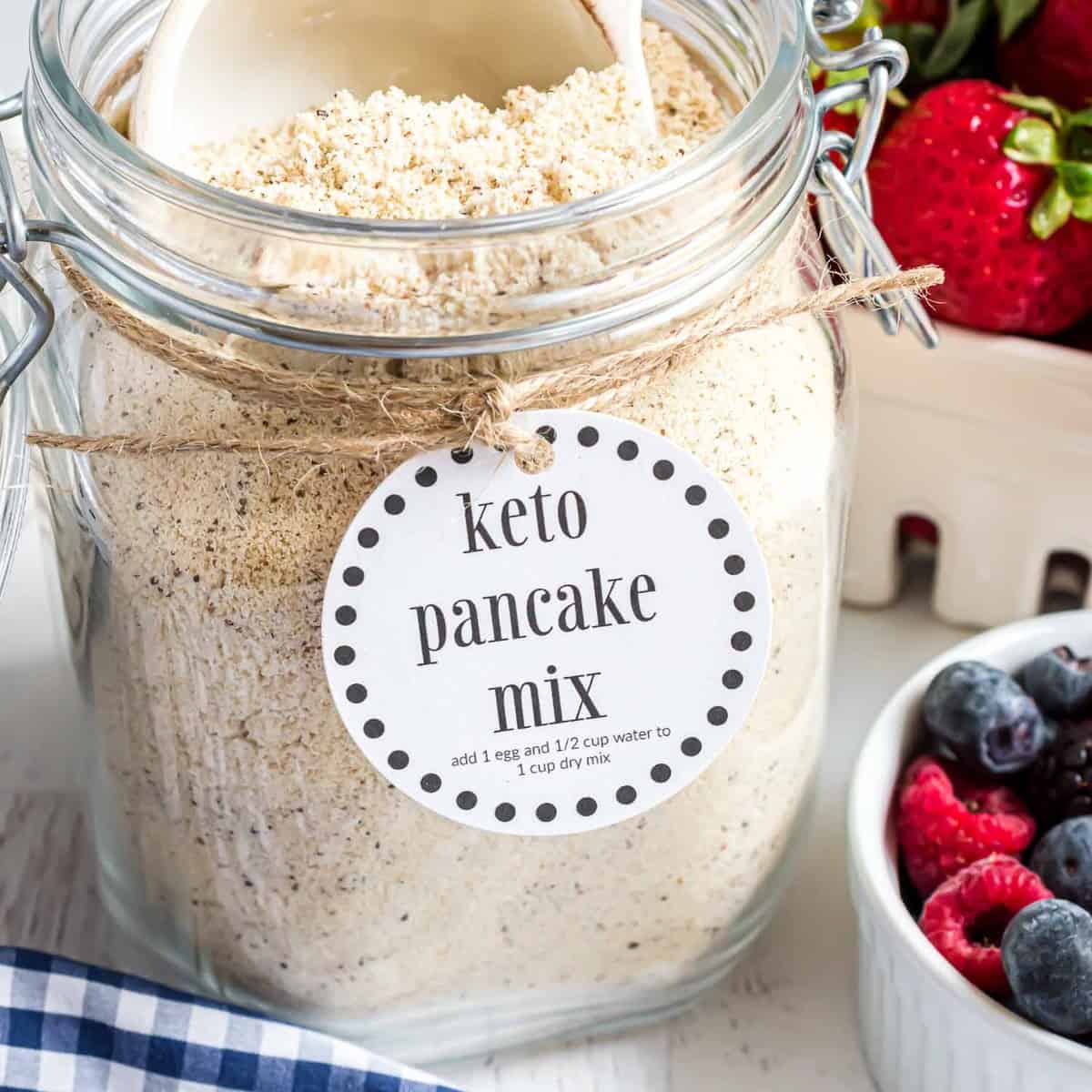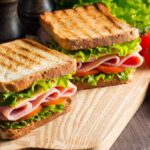Indulge your pancake cravings without the guilt! This collection of keto and low-carb pancake recipes offers a delightful escape for health-conscious individuals seeking delicious alternatives. Imagine fluffy, golden-brown pancakes, bursting with flavor, yet perfectly aligned with your dietary goals. Forget bland, restrictive diets – these recipes prove that healthy eating can be incredibly satisfying and surprisingly versatile.
We’ll explore a variety of flour alternatives, from the nutty richness of almond flour to the subtle sweetness of coconut flour, showcasing how simple ingredient swaps can transform a classic breakfast into a keto-friendly masterpiece. Prepare to discover the secrets to achieving the perfect texture, from light and airy to delightfully dense, and learn how to customize your pancakes to match your unique taste preferences. Get ready to elevate your breakfast game with recipes that are both satisfying and guilt-free.
Introduction to Keto and Low-Carb Pancakes
Imagine sinking your teeth into a fluffy, golden-brown pancake, bursting with delicious flavor, yet completely guilt-free. This isn’t a fantasy; it’s the delightful reality of keto and low-carb pancakes. For those embracing a healthier lifestyle, the idea of giving up pancakes often feels like a cruel sacrifice. But what if we told you that you could enjoy this breakfast staple while simultaneously achieving your weight loss or health goals? Keto and low-carb pancakes offer a delicious and satisfying alternative, proving that healthy eating doesn’t have to mean bland or boring.
The ketogenic diet, characterized by its high-fat, moderate-protein, and very-low-carbohydrate composition, has gained significant popularity for its potential benefits in weight management, improved blood sugar control, and increased energy levels. While traditional pancakes are carbohydrate bombs, keto and low-carb versions cleverly replace the usual flour with alternatives like almond flour, coconut flour, or even psyllium husk, allowing you to indulge in the texture and taste of pancakes without the detrimental effects of excessive carbohydrate intake. This makes it a truly appealing option for those following a ketogenic lifestyle or simply seeking to reduce their carbohydrate consumption.
The Science Behind Keto-Friendly Pancakes
The magic of keto pancakes lies in the careful selection of ingredients. Traditional pancake recipes rely heavily on wheat flour, a significant source of carbohydrates that spike blood sugar levels. Keto recipes, however, substitute this with low-carb alternatives. Almond flour, for example, provides a subtly nutty flavor and a relatively light texture. Coconut flour, on the other hand, offers a denser, more cake-like consistency. The addition of eggs and fats, such as coconut oil or butter, contributes to the rich, satisfying texture and helps to mimic the experience of traditional pancakes. These ingredients are carefully chosen to maintain a low net carb count per serving, ensuring the recipe aligns with the principles of a ketogenic diet. The result is a pancake that satisfies both your taste buds and your dietary needs.
Popular Low-Carb Flour Alternatives
A variety of low-carb flours can be successfully used in keto pancake recipes. Each offers a unique texture and flavor profile. For instance, almond flour produces a lighter, slightly crumbly pancake, ideal for those who prefer a more delicate texture. Coconut flour, due to its higher absorbency, creates a denser, more cake-like pancake. A blend of these two flours can often produce the perfect balance. Other options include flaxseed meal, which adds a slightly nutty and slightly fibrous texture, and psyllium husk powder, which contributes to a softer, more cohesive pancake. The choice of flour ultimately depends on individual preferences and the desired texture of the final product. Experimentation is key to discovering your favorite low-carb pancake flour combination.
Step-by-Step Visual Guide

Creating the perfect keto pancake is a journey of texture and taste, a dance between flour alternatives and the right amount of liquid. This guide will walk you through each stage, highlighting the visual cues that indicate success, and offering solutions to common problems. You’ll learn to identify the ideal batter consistency and understand how to achieve that golden-brown, fluffy perfection.
Mixing the Dry Ingredients
Begin by visualizing a large bowl, its pristine surface ready to receive the foundation of your keto pancakes. Into this bowl, gently sift almond flour, coconut flour, and a touch of baking powder. The almond flour, a pale, fine powder, contributes to a tender crumb, while the coconut flour, slightly coarser, adds a subtle sweetness and helps absorb excess moisture. The baking powder, a fine white powder, sits patiently, awaiting its role in creating that airy lift. The combined dry ingredients form a light, almost ethereal cloud in the bowl, ready to be transformed.
Adding the Wet Ingredients
Now, picture a separate bowl, containing the wet ingredients. This includes eggs, a splash of milk (almond or coconut milk are ideal), melted butter, and a touch of sweetener (erythritol or stevia). The eggs, a vibrant yellow, are the binding agents, their yolks adding richness. The milk, creamy white, adds moisture and a hint of subtle flavor. The melted butter, a glistening golden pool, provides richness and a delightful aroma. The sweetener, a fine white powder, contributes a delicate sweetness without disrupting the ketogenic balance. Gently whisk these wet ingredients together until they form a smooth, homogenous mixture – think of a creamy, golden emulsion.
Combining Wet and Dry Ingredients
Gently pour the wet ingredients into the bowl of dry ingredients. Resist the urge to overmix; instead, use a gentle, folding motion to incorporate the wet ingredients into the dry. The batter will gradually transform from a dry, powdery mixture into a smooth, slightly thick consistency. Avoid overmixing, as this can lead to tough pancakes. The ideal batter should be thick enough to hold its shape but still pourable, resembling a thick cream. Its color will be a pale, golden hue, flecked with the tiny specks of coconut flour.
Cooking the Pancakes
Heat a lightly oiled griddle or frying pan over medium heat. Once hot, carefully pour 1/4 cup of batter onto the hot surface for each pancake. Watch as each dollop of batter gently spreads, forming a small, round disc. Tiny bubbles will begin to appear on the surface, a sign that the pancake is setting. After a couple of minutes, gently flip the pancake using a spatula. The underside should be a beautiful, golden brown. Cook the other side until it, too, is golden brown and cooked through. The finished pancake should be light and fluffy, with a delicate golden-brown crust and a soft, tender interior.
Troubleshooting
- Pancake too dense: This often indicates overmixing or insufficient liquid. Next time, mix gently and add a tablespoon of milk at a time until the desired consistency is reached.
- Pancake too crumbly: This usually suggests insufficient liquid or eggs. Add a little more milk or an extra egg to the batter and remix gently.
- Pancake burning too quickly: Reduce the heat on your griddle or pan. Ensure that the pan is evenly heated before adding the batter.
- Pancake sticking to the pan: Use a non-stick pan or griddle, and ensure it is properly oiled or greased before cooking.
From basic recipes using simple, readily available ingredients to more adventurous flavor combinations and creative toppings, this guide empowers you to confidently craft keto pancakes that will impress even the most discerning palates. Whether you’re a seasoned keto enthusiast or just starting your low-carb journey, these recipes offer a gateway to a world of delicious possibilities. So, grab your mixing bowls, embrace the culinary adventure, and get ready to enjoy pancakes that are as healthy as they are heavenly.
FAQ Summary
Can I use other sweeteners besides the ones listed?
Yes, you can experiment with other keto-friendly sweeteners like erythritol, monk fruit, or stevia, but adjust the amount according to the sweetness level of your chosen sweetener.
How can I store leftover pancakes?
Store leftover pancakes in an airtight container in the refrigerator for up to 3 days. Reheat gently in a pan or microwave.
Are these recipes gluten-free?
Most of the recipes are naturally gluten-free, depending on the specific flour alternative used. Always check the ingredient labels to ensure gluten-free certification if needed.
What happens if I add too much liquid to the batter?
Adding too much liquid will result in thin, flat pancakes. Adjust the liquid gradually until you achieve the desired consistency – a slightly thick batter is ideal.


